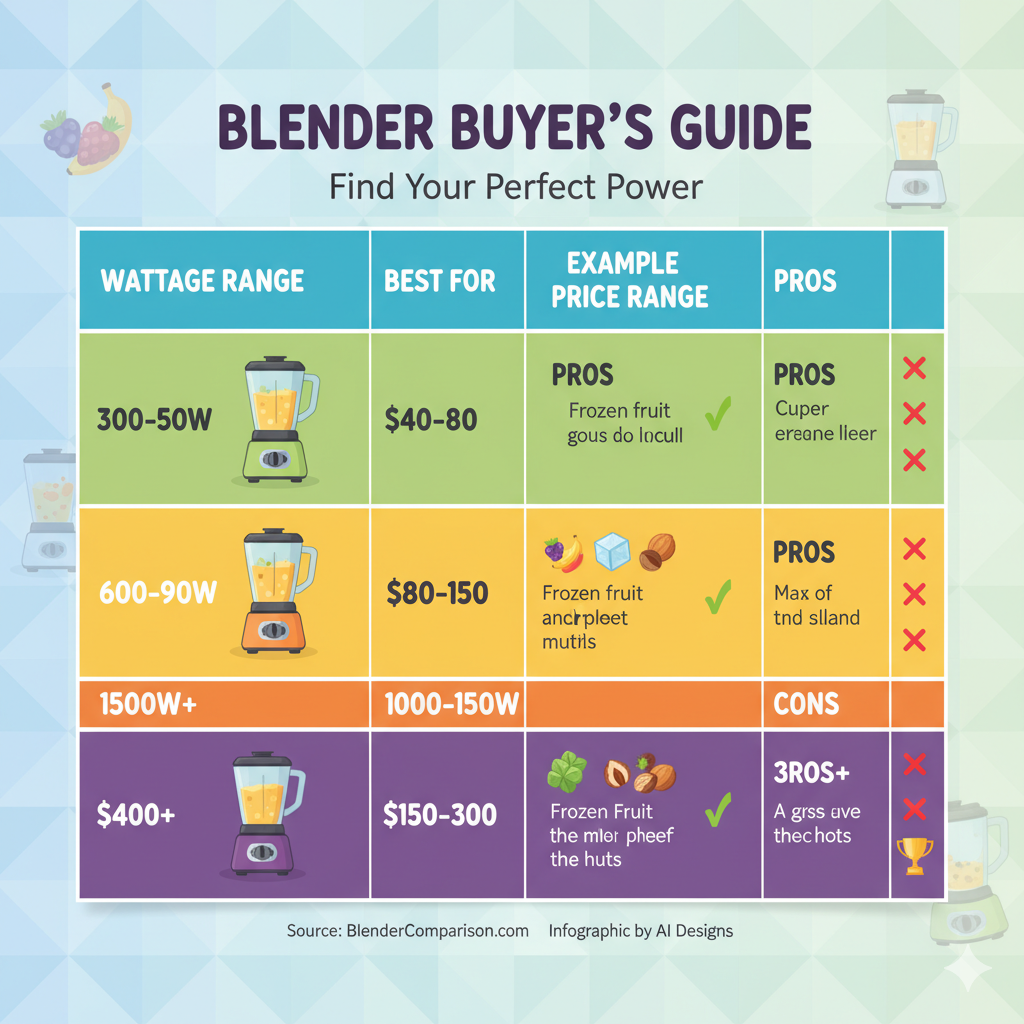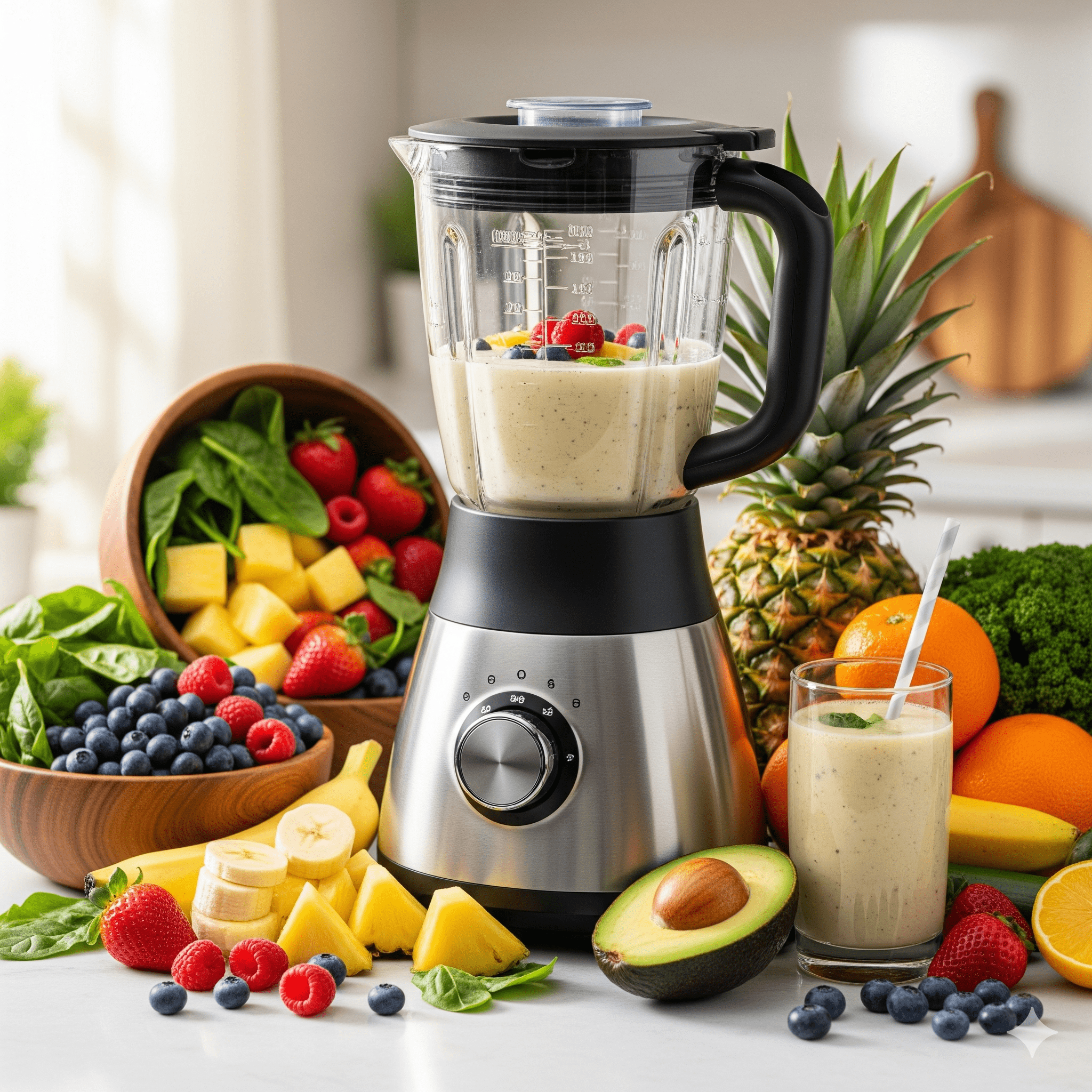Introduction
Smoothies are one of the easiest ways to fuel your body with fruits, vegetables, and nutrients. But here’s the catch: not every blender can handle the job. Buy the wrong one, and you’ll be stuck with chunky textures, noisy motors, or a machine that burns out too quickly.
The good news? Choosing the right blender isn’t complicated once you know what to look for. In this guide, we’ll break down the 7 key features to check before buying a smoothie blender so you can enjoy silky-smooth results every time.
Why Choosing the Right Blender is Important
- Smooth texture vs. lumpy results: The right blender ensures frozen fruit and leafy greens blend into a creamy, drinkable texture.
- Save time & money: A reliable blender lasts longer and prevents you from constantly upgrading.
- Better nutrition: A powerful blender extracts more nutrients by breaking down cell walls in fruits and vegetables.
7 Key Features to Check Before Buying a Smoothie Blender
1. Motor Power (Wattage & Performance)
The motor is the heart of your blender. For smoothies, aim for at least 600–1000 watts.
- 300W blenders: Fine for soft fruits, but struggle with ice or frozen fruit.
- 1000W+ blenders: Handle everything—ice, nuts, seeds, and frozen fruit—without burning out.
👉 If you love thick smoothie bowls or protein shakes with ice, go for higher wattage.

2. Blade Design & Material
Blades determine how smoothly your ingredients blend.
- Stainless steel blades → Durable, rust-resistant, and sharp enough for frozen fruit.
- Cheaper blades → Dull quickly and leave chunks.
Pro tip: Look for multi-angle blades that create a vortex effect for even blending.
3. Jar Size & Material
The container size and material make a huge difference in convenience.
- Glass jars: Heavy but don’t retain odors.
- Plastic jars: Lightweight but may scratch over time.
- BPA-free Tritan jars: A safe, durable middle ground.
For personal use, 16–24 oz jars are enough. For families, 48–64 oz is better.
4. Speed Settings & Controls
A single-speed blender might work, but multiple settings give you more control.
- Variable speed: Helps achieve perfect texture.
- Preset programs: Great for smoothies, soups, or ice crushing.
- Pulse function: Essential for breaking down ice or hard chunks.
5. Ease of Cleaning
Daily smoothies = daily cleaning. Look for:
- Dishwasher-safe jars and lids.
- Removable blades for a thorough wash.
- A simple design without too many nooks where food gets stuck.
6. Noise Level
All blenders make noise, but some are quieter.
- High-powered blenders = usually louder.
- Tips to reduce noise: Place a silicone mat under the blender or choose models with noise-dampening design.
7. Price & Warranty
Price often reflects performance.
- Budget range ($50–$100): Good for beginners, softer ingredients.
- Mid-range ($100–$300): Powerful enough for most smoothies.
- Premium ($300+): Professional-grade with long warranties.
Brands like Vitamix and Blendtec offer extended warranties, making them worth the investment.
Extra Features That Can Be Helpful
- Portable blender cups for blending and drinking on-the-go.
- Smart blending technology that adjusts power automatically.
- Safety features like automatic shut-off or secure-lock lids.
Mistakes to Avoid When Buying a Blender
- Going too cheap: You’ll likely replace it sooner.
- Ignoring wattage: Weak motors can’t handle frozen fruit or ice.
- Wrong size choice: A small jar won’t work for family batches.
Recommended Blender Types (Quick Guide)
- Personal blenders: Compact, easy to use (e.g., Nutribullet, Ninja Fit).
- High-performance blenders: Best for serious smoothie lovers (e.g., Vitamix, Blendtec).
- Budget-friendly options: Reliable choices without overspending (e.g., Ninja, Oster).
Conclusion
The perfect smoothie blender comes down to power, blades, size, and convenience. By checking these 7 features, you’ll avoid costly mistakes and enjoy creamy, nutrient-packed smoothies at home.
👉 Ready to find your perfect match? Check out our full guide on the [Best Blenders for Homemade Smoothies].
Frequently Asked Questions (FAQs)
Q: What wattage blender is best for smoothies?
A blender with at least 600–1000 watts is ideal for smoothies. For frozen fruit or nut butters, choose 1000W+.
Q: Can I use a regular blender for smoothies?
Yes, but weaker models may leave chunks or struggle with ice. A smoothie-focused blender performs better.
Q: Is a glass blender better than plastic?
Glass doesn’t stain or hold odors, but it’s heavier. BPA-free Tritan plastic is a lighter, durable alternative.

